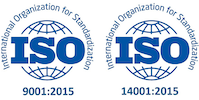Table of Contents
ToggleIntroduction
Solar energy has emerged as a leading contender in the quest for sustainable and renewable energy sources. Among the various types of solar panels available, monocrystalline solar panels stand out for their efficiency and reliability. In this comprehensive guide, we delve into the intricacies of monocrystalline solar panels, exploring their technology, installation, maintenance, environmental impacts, and future trends.
Definition and Basic Concept
Monocrystalline solar panels are photovoltaic modules made from single-crystal silicon, which is derived from a single continuous crystal structure. This uniformity in crystal structure allows for higher efficiency and performance compared to other types of solar panels. The development of monocrystalline solar panels dates back to the mid-20th century when researchers began exploring ways to harness solar energy for electricity generation. Over the years, advancements in materials science and manufacturing processes have led to significant improvements in the efficiency and affordability of monocrystalline solar panels.
Monocrystalline solar panels play a crucial role in various applications, including residential, commercial, and industrial solar power systems. Their high efficiency makes them particularly well-suited for situations where space is limited or where maximum energy output is desired. Monocrystalline solar panels are typically made from high-purity silicon ingots, which are sliced into thin wafers. These wafers are then treated to create a uniform crystal lattice structure, ensuring optimal electron flow and energy conversion.
Manufacturing Process
The manufacturing process for monocrystalline solar panels involves several steps, including crystal growth, wafer slicing, surface treatment, cell assembly, and module encapsulation. Each step requires precision and attention to detail to ensure the final product meets quality standards.One of the primary advantages of monocrystalline solar panels is their high efficiency, which allows them to convert a greater percentage of sunlight into electricity compared to other types of solar panels. This efficiency translates to higher energy yields and faster return on investment for solar power systems.
Monocrystalline solar panels are known for their durability and longevity. The single-crystal silicon construction makes them less susceptible to degradation over time, resulting in a longer lifespan and reduced maintenance requirements.While monocrystalline solar panels tend to have a higher upfront cost compared to other types of solar panels, their superior efficiency and longevity often make them more cost-effective in the long run. Additionally, advancements in manufacturing processes have helped reduce the cost of monocrystalline solar panels in recent years.
Monocrystalline and polycrystalline solar panels are the two main types of crystalline silicon solar panels. While both types share some similarities, they also have distinct differences in terms of efficiency, aesthetics, and performance in different environmental conditions. Thin-film solar panels offer an alternative to crystalline silicon solar panels, with advantages such as flexibility, lightweight, and lower manufacturing costs. However, they typically have lower efficiency and shorter lifespans compared to monocrystalline solar panels.
When comparing different types of solar panels, several performance metrics should be considered, including efficiency, temperature coefficient, degradation rate, and warranty coverage. Monocrystalline solar panels often excel in these metrics, making them a preferred choice for many solar power installations.
Installation and Maintenance of Monocrystalline Solar Panels
The success of a solar power installation depends heavily on proper site selection and preparation. Factors such as sunlight exposure, shading, roof orientation, and structural integrity must be carefully evaluated to maximize the performance of monocrystalline solar panels. Monocrystalline solar panels can be mounted in various configurations, including rooftop, ground-mounted, and pole-mounted systems. The choice of mounting option depends on factors such as available space, local regulations, and aesthetic preferences.
Proper wiring and connection are essential for ensuring the efficient operation of a solar power system. This includes correctly sizing and routing cables, installing inverters and other electrical components, and complying with safety standards and building codes. To maximize the lifespan and performance of monocrystalline solar panels, regular maintenance is required. This may include cleaning the panels to remove dirt and debris, inspecting for damage or wear, and performing any necessary repairs or replacements.
Routine cleaning of monocrystalline solar panels helps maintain optimal energy production by removing dirt, dust, pollen, and other debris that can accumulate on the panel surface. Cleaning should be done with a soft brush or sponge and mild detergent, avoiding abrasive materials that could scratch the panels. Periodic inspection of monocrystalline solar panels allows for early detection of potential issues such as cracks, delamination, or corrosion. Inspections should be performed by qualified technicians using appropriate tools and equipment.
Environmental and Economic Impacts
Solar energy is widely regarded as a sustainable and environmentally friendly alternative to fossil fuels. Monocrystalline solar panels produce clean electricity with no greenhouse gas emissions or air pollution, helping to mitigate climate change and reduce dependence on finite resources. The energy efficiency of monocrystalline solar panels, combined with their long lifespan, results in significant reductions in carbon emissions over the lifetime of a solar power system. Studies have shown that switching to solar energy can reduce carbon footprints by up to 90% compared to conventional electricity sources.
The economic viability of monocrystalline solar panels depends on factors such as installation costs, energy savings, government incentives, and local utility rates. In many regions, solar power has become increasingly competitive with traditional energy sources, making it an attractive investment for homeowners, businesses, and utilities. The return on investment for a monocrystalline solar panel installation depends on factors such as system size, location, electricity prices, and available incentives. With proper planning and financing, solar power systems can offer attractive returns and long-term savings on electricity bills.
Government incentives and rebates can significantly reduce the upfront cost of installing monocrystalline solar panels, making them more accessible to homeowners and businesses. These incentives may include tax credits, rebates, grants, and net metering programs that allow solar owners to sell excess electricity back to the grid.
Prospects for Advancement and Adoption
As technology continues to improve and costs continue to decline, the adoption of monocrystalline solar panels is expected to accelerate in the coming years. With continued support from governments, businesses, and consumers, solar energy has the potential to become a dominant force in the global energy landscape. In the face of climate change and environmental degradation, the transition to renewable energy sources such as solar power is not just desirable but necessary. By harnessing the power of the sun, we can create a more sustainable and equitable future for generations to come.
Conclusion
In conclusion, monocrystalline solar panels offer a path towards a cleaner, greener, and more sustainable world. By embracing this technology and investing in renewable energy infrastructure, we can build a brighter future for ourselves and future generations.
FAQS
What are monocrystalline solar panels made of?
Monocrystalline solar panels are made from high-purity silicon ingots that are derived from a single continuous crystal structure. This uniformity in crystal structure allows for higher efficiency and performance compared to other types of solar panels.
How do monocrystalline solar panels differ from polycrystalline panels?
Monocrystalline solar panels are made from single-crystal silicon, whereas polycrystalline panels are made from multiple silicon fragments melted together. Monocrystalline panels tend to have higher efficiency and a more uniform appearance, while polycrystalline panels are typically more affordable but slightly less efficient.
What is the lifespan of a monocrystalline solar panel?
Monocrystalline solar panels are known for their durability and longevity, with an average lifespan of 25 to 30 years or more. Proper installation and maintenance can further extend the lifespan of monocrystalline panels, making them a reliable long-term investment.
Are monocrystalline solar panels suitable for all climates?
Monocrystalline solar panels perform well in a wide range of climates, including both hot and cold environments. However, extreme temperatures or frequent shading can affect their efficiency. Proper site selection, orientation, and maintenance can help optimize performance in any climate.
How do I know if monocrystalline solar panels are right for my home or business?
Choosing the right type of solar panels depends on various factors, including energy needs, budget, available space, and location. Monocrystalline solar panels are ideal for situations where space is limited or maximum energy output is desired. Consulting with a qualified solar installer can help determine the best solution for your specific needs and circumstances.







